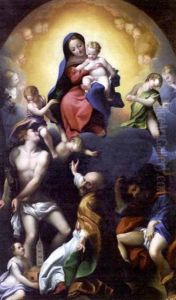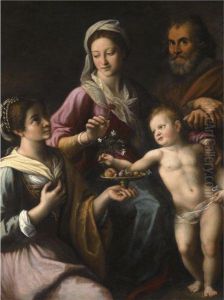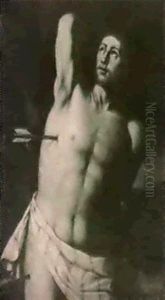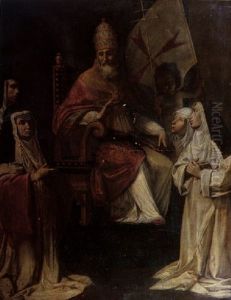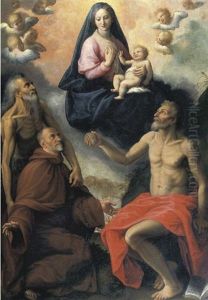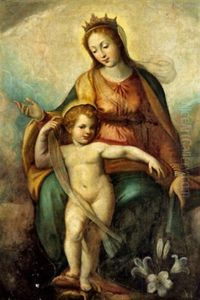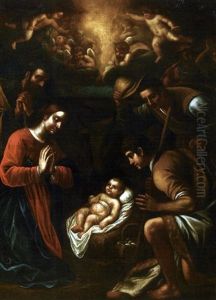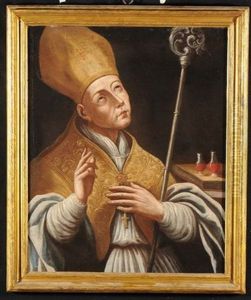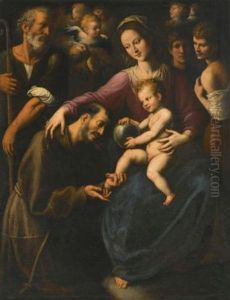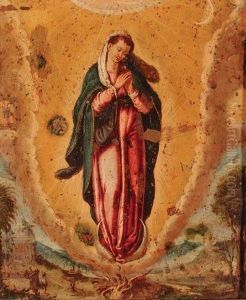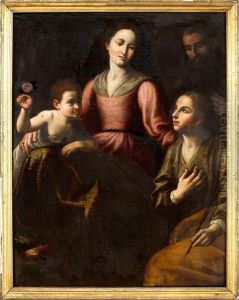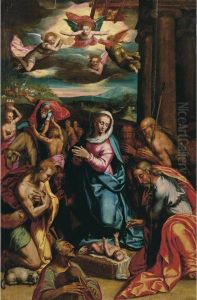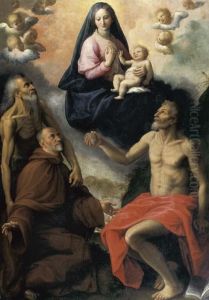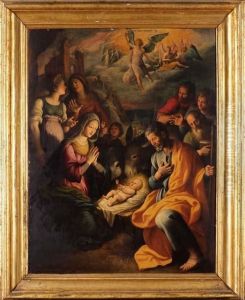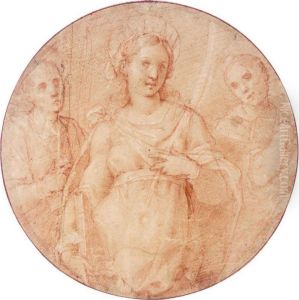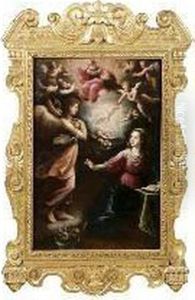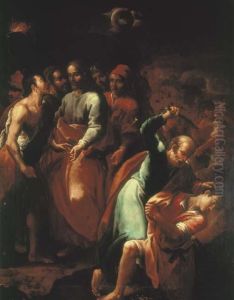Fabrizio Santafede Paintings
Fabrizio Santafede was an Italian painter who was born in Naples in 1560. He was part of a family of artists; his father, Francesco Santafede, was also a painter, and it is believed that Fabrizio received his initial training from his father. Later, he may have studied with the painter and draftsman, Giovanni Filippo Criscuolo. Santafede's work was heavily influenced by the prevailing Counter-Reformation artistic styles and trends, which is reflected in his religious subject matter and the emotional intensity of his paintings.
In the late 16th and early 17th centuries, Naples was a vibrant artistic center, and Santafede's career blossomed in this environment. His style shows the influence of other contemporary Neapolitan artists, such as the mannerist painter, Francesco Curia, and the Carracci family of Bologna, whose work was known throughout Italy for its classical balance and composition. Santafede's paintings are characterized by their rich color palette, detailed representation, and the dramatic use of light and shadow, which is indicative of the Baroque style that was emerging during this period.
Throughout his career, Santafede completed numerous commissions for religious institutions, including altarpieces for many of the churches in Naples. His works often featured saints and biblical scenes, executed with a sense of grandeur and a focus on the spiritual and emotional states of the figures depicted. Some of his notable works include the 'Assumption of the Virgin' for the church of Gesù Nuovo and 'The Nativity of the Virgin' for the church of Santa Maria Donnaregina Nuova in Naples.
Santafede's influence extended to other artists in the region, and he had several pupils, including his own son, Francesco Santafede, who continued his father's artistic legacy. Despite the prominence of his work during his lifetime, Fabrizio Santafede's name is not as widely recognized today as some of his contemporaries. Nevertheless, his contributions to the Neapolitan school of painting and the evolution of Baroque art in Italy remain significant.
Fabrizio Santafede died in 1634 in Naples. His works can still be seen in various churches in Naples as well as in museum collections that house Italian Baroque paintings. Santafede's career reflects the dynamic changes in artistic styles between the late Renaissance and the early Baroque period, marking him as an important figure in the transition between these two major epochs in art history.
